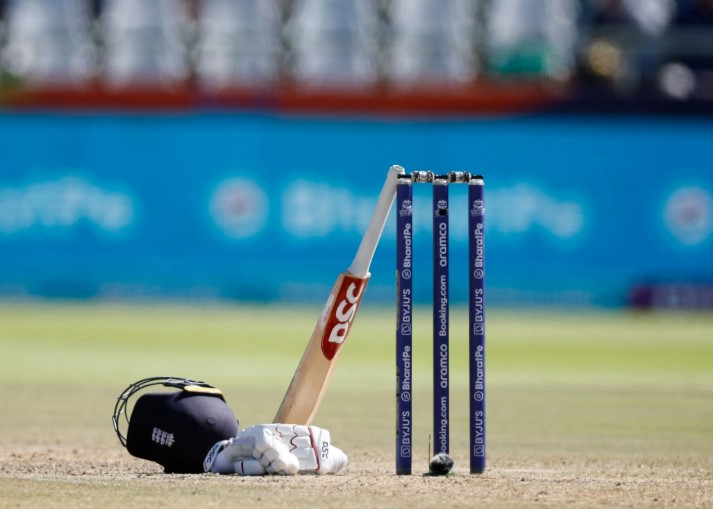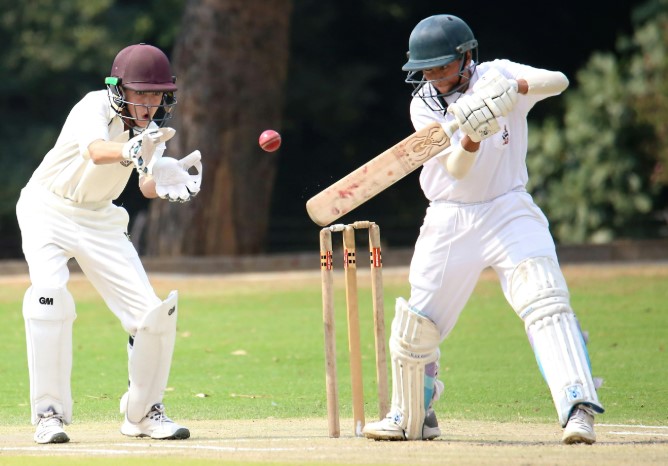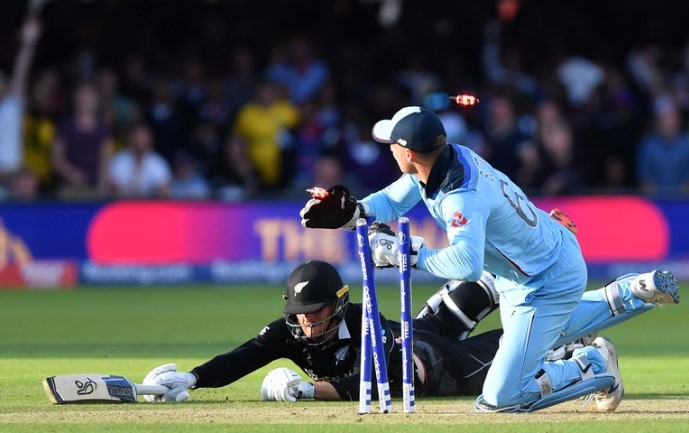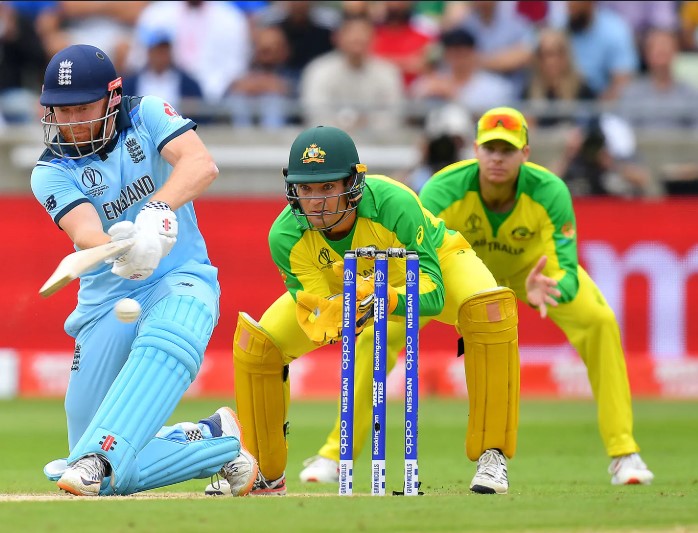Cricket Rules: Cricket, a game with a rich history and tradition, has seen several innovations and changes over the years. As the sport continues to evolve, governing bodies like the International Cricket Council (ICC) introduce new rules to enhance the game’s appeal, make it faster, fairer, and even more thrilling for fans. Whether these changes address the growing demand for more dynamic and exciting matches or are designed to ensure fairness, there are some exciting new rules that cricket enthusiasts should be aware of.
Cricket Rules: In this article, we will explore some of the most recent and exciting rules in cricket, analyzing how they impact the game and enhance the viewing experience.
Table of Contents
Cricket Rules: The Introduction Of The ‘Powerplay’ In ODIs And T20s

Cricket Rules: One of the most exciting rule changes in limited-overs cricket is the concept of the “Powerplay.” This rule has been in place for several years but has undergone revisions to make the game more exciting. The Powerplay refers to a set of overs during which certain fielding restrictions apply. These restrictions are designed to encourage more aggressive batting and create more scoring opportunities.
Cricket Rules: In ODIs, the first 10 overs are designated as the “Powerplay” overs, during which only two fielders are allowed outside the 30-yard circle. In the T20 format, this is reduced to the first six overs, allowing only two fielders outside the circle. After the Powerplay period, the number of fielders allowed outside the circle increases, which opens up the field for more strategic play.
Powerplay In ODIs vs. T20s
| Format | Powerplay Overs | Fielding Restrictions | Key Objective |
|---|---|---|---|
| ODI | First 10 overs | Only 2 fielders allowed outside the 30-yard circle | Promote aggressive batting in early overs |
| T20 | First 6 overs | Only 2 fielders allowed outside the 30-yard circle | Maximize scoring in the powerplay period |
| Post-Powerplay | 11-50 overs (ODI) | Up to 5 fielders allowed outside the 30-yard circle | Strategic field placements, balance between attack and defense |
Cricket Rules: The Powerplay rule has made limited-overs cricket much more exciting, as it forces batsmen to take risks early on and creates a fast-paced contest. Fans have also seen higher scores and more boundaries, especially with fielding restrictions encouraging a more aggressive approach from the batsmen.
The ‘Free Hit’ After A No-Ball in Limited-Overs Cricket

Cricket Rules: The free-hit rule has become an iconic feature in limited-overs cricket, particularly in T20s. When a bowler delivers a no-ball (usually for overstepping), the batsman is awarded a free hit. This means that the batsman can only be dismissed in limited ways (not through being caught, bowled, or stumped), which significantly increases their chances of scoring.
Cricket Rules: This rule was introduced to make the game more exciting by allowing the batsman to take full advantage of a bowler’s mistake. The free-hit makes the game more unpredictable and creates a spectacle for fans, as it gives the batsman the opportunity to unleash a more aggressive shot without the worry of being dismissed in a conventional way.
Free Hit Scenarios
| No-Ball Offense | Free Hit Consequence | Impact on the Game |
|---|---|---|
| Overstepping the line (front foot no-ball) | Batsman gets a free hit for the next delivery | Encourages aggressive batting and risky shots |
| High full toss (above the batter’s waist) | Free hit awarded for the next delivery | Increases the risk for bowlers and adds excitement |
| Overarm bowling (illegal action) | Free hit for the next ball if illegal action is detected | Forces bowlers to maintain legal actions |
Cricket Rules: The free hit rule has certainly added a layer of excitement and increased the intensity of limited-overs cricket. It provides a thrilling spectacle for fans, often resulting in massive sixes or bold strokes.
The ‘Super Over’ In Case Of A Tie (T20s and ODIs)

Cricket Rules: The Super Over rule is another recent addition to limited-overs cricket that has garnered significant attention. This rule comes into play when a match ends in a tie (equal scores for both teams) in a T20 or ODI game. The match is then decided by a one-over per side eliminator, known as the Super Over.
Cricket Rules: Each team gets one over to score as many runs as possible. The team with the higher score at the end of the Super Over wins the match. This rule was introduced to add an exciting finale to tied matches, ensuring that the game always has a clear winner.
Super Over In T20s And ODIs
| Format | Super Over Rules | Key Objective |
|---|---|---|
| T20 | One over for each team | To break the tie and create an exciting finish |
| ODI (Occasionally) | One over for each team | To determine the winner after a tie in the match |
| Winner | Highest score wins after 1 over per side | Creates a dramatic and fast-paced conclusion |
The ‘Pitch Clock’ For Fast Bowlers (Limited-Overs)
Cricket Rules: To speed up the game and reduce delays, the ICC introduced the pitch clock rule for fast bowlers. This rule dictates a strict time limit for bowlers between deliveries. Fast bowlers are given a certain amount of time (usually around 20-25 seconds) to bowl the next delivery after the previous ball is completed.

Cricket Rules: The objective of this rule is to maintain the flow of the game and minimize time-wasting tactics. It has helped create faster-paced games, and while it may seem trivial, the pitch clock can have a significant impact on a team’s rhythm and momentum.
Pitch Clock Rules For Fast Bowlers
| Rule | Time Limit | Impact | Objective |
|---|---|---|---|
| Time between deliveries | 20-25 seconds | Forces bowlers to speed up, reducing time-wasting | Ensures quicker game flow and maintains audience engagement |
| Overrunning the time limit | 1-2 penalty runs for the fielding team | Penalizes the fielding side for delay | Keeps the game moving at a faster pace |
| Umpire’s discretion | Umpire monitors time, gives warning if needed | Ensures fairness and consistency | Prevents bowlers from delaying play |
Cricket Rules: While the pitch clock doesn’t generate as much fanfare as some other rules, it plays a crucial role in making the game more viewer-friendly by ensuring that teams don’t waste time unnecessarily, allowing for more entertaining cricket.
The ‘Five-Run Penalty’ For Overthrows (Fielding)
Cricket Rules: A relatively newer rule in cricket is the five-run penalty for overthrows. If a fielder deliberately throws the ball away from the batsman’s intended direction to prevent a run-out, the batting team is awarded five penalty runs. This penalty is imposed when the fielder is deemed to be making an illegal attempt to obstruct the batsman’s running, even if it’s in the context of a run-out attempt.
The five-run penalty rule ensures fairness, as it stops fielders from trying to interfere with a batsman’s natural running. It also adds an element of strategy, as fielding sides need to be mindful of how they handle throws, especially in crucial moments of the game.

Five-Run Penalty For Overthrows
| Offense | Penalty Imposed | Effect on the Game |
|---|---|---|
| Fielder deliberately obstructs the batsman’s run | 5-run penalty added to batting side’s total | Protects batting side from unfair fielding tactics |
| Fielder attempts a run-out, but the throw is wild | No penalty if the throw is accidental or unintentional | Creates strategic implications for fielders |
This rule change has certainly made the game fairer, preventing fielders from unfairly influencing the result by breaking the spirit of the game.
The ‘Decision Review System’ (DRS) Expansion
In recent years, the Decision Review System (DRS) has undergone various tweaks to make it more accessible and accurate. While it has been used for a while, the introduction of technology like ball-tracking, UltraEdge (for detecting edges), and additional reviews for teams has made it even more reliable.
The system now allows players to challenge on-field umpire decisions (such as LBWs, caught-behind, and other dismissals) using advanced technology, which has increased the accuracy of on-field decisions. DRS now plays a crucial role in improving the fairness of the game and reducing controversial decisions.
Decision Review System (DRS) Impact
| Review Type | Technology Used | Key Objective |
|---|---|---|
| LBW Decisions | Ball tracking (HawkEye, etc.) | Provides accurate predictions on whether the ball would hit the stumps |
| Caught Behind | UltraEdge (edge detection) | Detects faint edges to avoid incorrect dismissals |
| Reviews per Team | 2-3 reviews per team per innings | Ensures fairness and reduces umpire errors |
The expansion of DRS has significantly increased the accuracy of decision-making in cricket, providing clarity and fairness in high-stakes moments.

Cricket is a dynamic and constantly evolving sport, and these exciting new rules demonstrate the governing bodies’ efforts to enhance the experience for both players and fans. Whether it’s the game-changing Super Over or the thrill of the free-hit after a no-ball, these innovations keep the game exciting and engaging.
As cricket continues to embrace new technology and tweak its traditional rules, we can expect even more changes that could further revolutionize the game. These exciting new rules are part of cricket’s ongoing transformation, ensuring the game remains fast-paced, fair, and thrilling for all involved.

